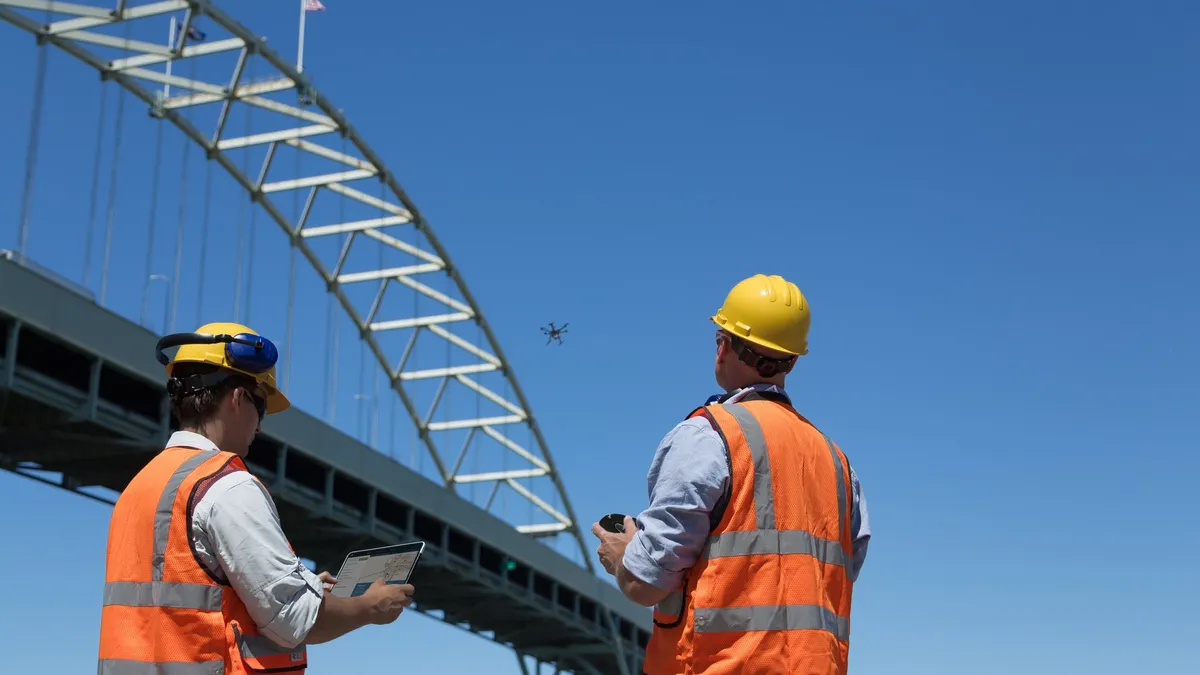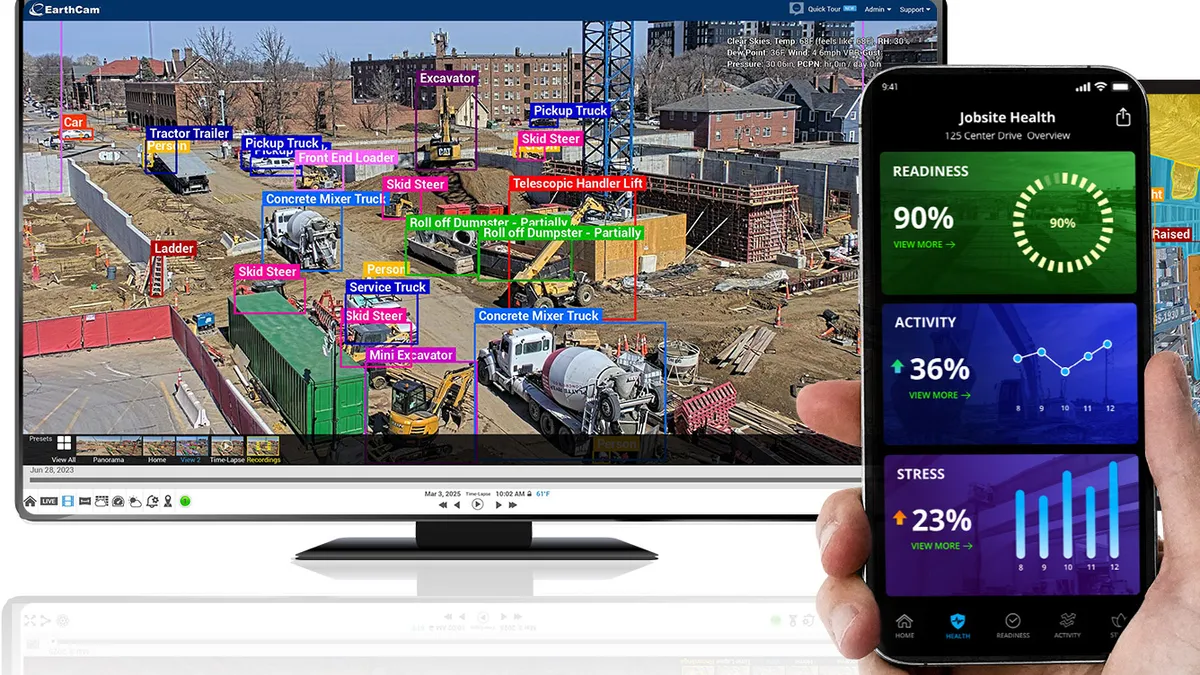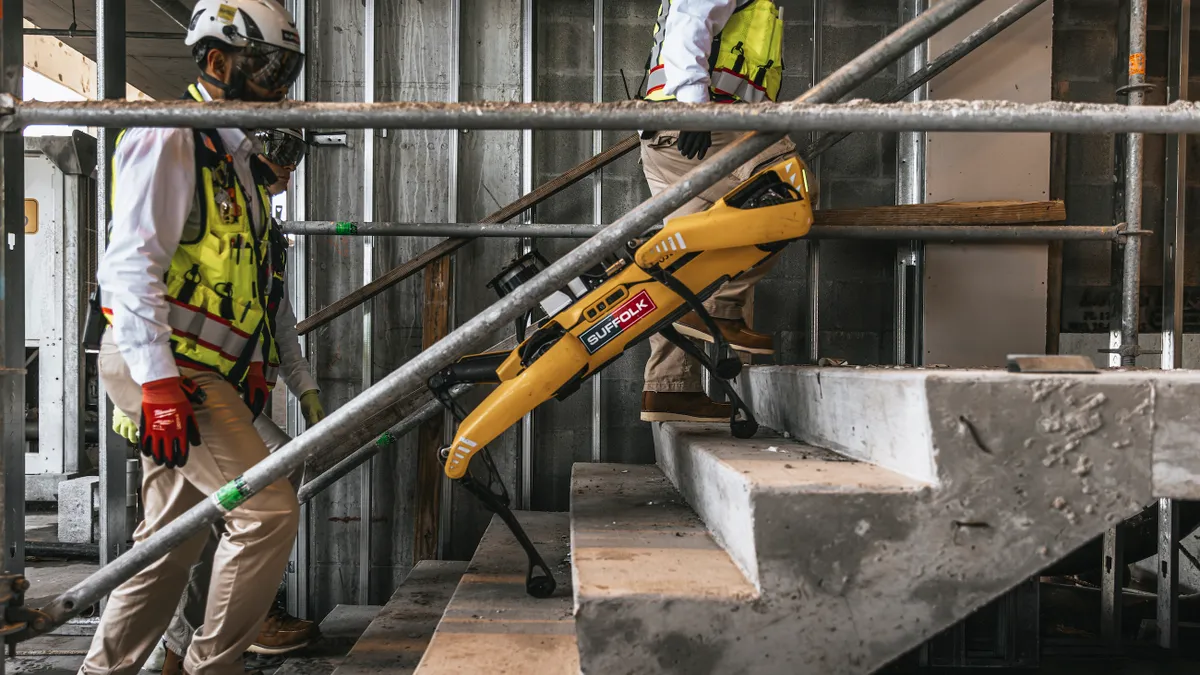Commercial drone use has been primed for take off, thanks to a breakdown of regulatory barriers in recent years. For example, when the Federal Aviation Administration in 2016 published Part 107 regulations for small unmanned aircraft systems (UAS, or drones), pilots were able to obtain drone licenses instead of the full pilot’s license that was previously required.
In addition, the Low Altitude Authorization and Notification Capability, an FAA collaboration with private industry to support UAS integration into airspace, reduces drone flight authorization waiting times from about 90 days to a few seconds, according to drone software and services provider Skyward. LAANC (pronounced “Lance”) saw its final regional rollout last week, with elective participation from about 500 airports.
Despite these and other regulatory rollbacks, the prospect of launching a drone program in-house can be daunting for a contractor. In a recent webinar sponsored by Skyward, drone consultants laid out a few steps for getting drones “off the ground” to serve as a powerful data collection tool.
Define your business objectives
Before a single aircraft is purchased or pilot is trained, companies need to clearly define their business’ reason for using drones, said Tariq Rashid, chief pilot at Skyward.
“Sometimes what happens is in the enthusiasm for the technology, we just kind of rush out and try to establish some kind of capability without actually binding it to the specific problem that needs to be solved,” he said. “That may result in going down the wrong direction or over specifying for something where you actually don’t need it.”
Technology is not a silver bullet, and when implemented without a well-defined strategy, it can cause more trouble than it’s worth. Companies sometimes make the mistake of launching a drone program that’s too broad, panelists said, to the extent that teams struggle to keep up with all the skills and procedures that would be required for every possible use case.
A general contractor is therefore better off narrowing its initial focus to something like HVAC inspection, according to Skyward marketing manager Sally Huynh. Not only does this help firms whittle down the many tech toys on the market to those tools most targeted to their business strategy, but it also sets out a clear-cut path to return on investment. If a GC can use drones to do something as simple as recognizing heat loss from facilities under construction, “you’ve just saved a lot of money and realized your own program ROI,” she said.
Make the case for safety
Once a contractor has set out its drone strategy, according to Skyward project manager Diego Barrera, it needs to start planning in three areas: regulatory, technical and operational. Teams should ask whether they can legally and safely fly in a particular area, whether they have the hardware (thermal cameras, for example) that their strategy requires and consider the processes and protocols they’ll need to have in place per FAA regulations, he said.
Some of the key rules for operation per Part 107, for example, are that drone operators must avoid manned aircraft, keep the drone within sight and secure air traffic control approval for operations in class B, C, D and E airspace.
It’s not enough to simply plan for compliance in these areas, though. Contractors have to provide the FAA sufficient “data-based evidence,” according to Rashid, that their policies, procedures and training for drone operation accounts for every worst-case scenario. “FAA has a legal and moral requirement not to endanger other aircraft or people on the ground,” he said, and to win the required approvals, companies have to prove that their program will not put others at risk.
If a contractor asserts that its parachute system will prevent harm to people on the ground in the event of an aircraft failure, it would have to provide the FAA quantifiable evidence that the system was reliable in testing and would prevent injury if a person were struck, for example.
“A good idea or a good concept is not good enough,” Rashid said. “You have to be explicit [by] saying, ‘We are going to put this on the aircraft, this is why it’s going to meet performance-based standards and here’s the evidence that shows it can meet [those] standards.”
Spread the word
The FAA isn’t the only party that needs convincing that all possible risks are being mitigated. A contractor’s legal and risk management teams will want to see a well-thought-out drone program strategy with safety protocols and standard operating procedures in place, said Huynh.
“Corporate lawyers and risk managers are a conservative bunch,” she said, and “it’s their responsibility to delay the launch of your project until you’ve achieved an acceptable level of risk mitigation.”
In order to avoid such delays, drone teams should consider developing pre-flight and post-flight checklists, for example, to decrease the variables that can lead to human error, the panelists said. By developing comprehensive safety protocols, teams are not only better equipped to detect deviations, but they can also ensure repeatability and hold all operators to the same safety standards.
Finally, when all the appropriate documentation is in place and drones are taking flight, companies should spread the word through any internal company outlet available — newsletters, videos, meetings, etc. Teams that have done the legwork to get FAA approval, safety protocols and a program strategy ready should reach out to the contractor’s internal communication team, said Huynh, and set out the path for other departments to acquire drones and train pilots. This, she said, is “key to program expansion and success.”






















